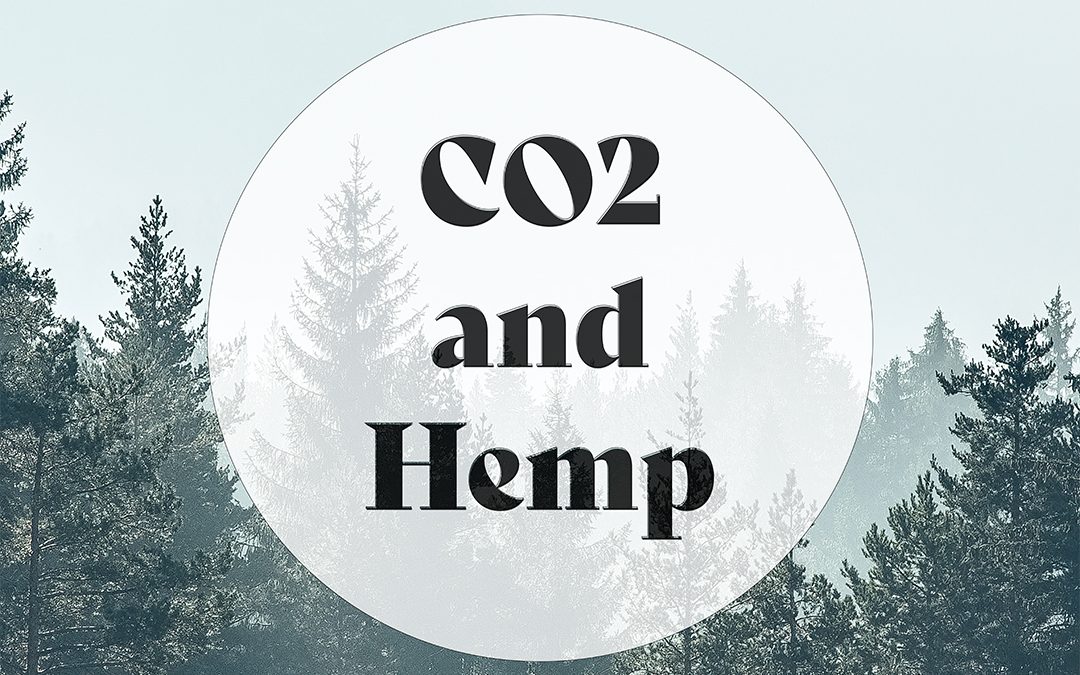Global warming and the carbon footprint that humans have are something you’ve likely heard of either through the news or in school. So, what does CO2 and Hemp have to do with this? Interestingly enough, more than you would think!
Hemp as a crop has many benefits over similar industries like cotton, but where it really shines is in its ability to potentially create a long-term replacement for plastics, while still being carbon negative.
While some of this probably makes sense to you from what you already know about the environment, CO2, and atmosphere, the benefits of the hemp crop on CO2 levels are far-reaching and have the potential to be even greater. In this article, we’ll dive deep into the topic of CO2 and Hemp!
What is a “Carbon Footprint”?
Although we hear the term now more than ever, we want to clarify and define exactly what the term carbon footprint denotes. A carbon footprint measures the total quantity of atmospheric greenhouse gasses that are generated by our actions. Although this figure includes other gasses, carbon dioxide constitutes the majority of our output, hence the carbon-centric name of the phenomenon.
We can control a great number of factors that contribute to our footprint on the environment. We just need to correct the systems through which we carry out our actions. For some people, this means riding a bike to work instead of driving. For others, it might mean farming hemp instead of cotton. Why? Hemp reduces the carbon footprint we make through a process called carbon sequestration.
Many plants do this, but hemp outperforms other industrial crops in this regard. For instance, an exhaustive study done by the Stockholm Ecological Institute suggests that between Cotton, hemp, and polyester, “Hemp represents the lowest Ecological Footprint of the three textiles.”
Why Should We Reduce Our Carbon Footprint?
Certain carbon levels in the atmosphere are important to the survival of many of Earth’s living organisms. These carbon levels also dictate the preservation of the ecosystems that support those organisms. If appropriate levels are exceeded, however, we risk permanent ecological damage.
Many scientists point to the carbon footprint that has increased dramatically since the industrial revolution as the cause of global warming.
Carbon Levels Over Time
The recent, rapid increases in CO2 levels in the atmosphere impact us all, and alarmingly so. We’ve had the entirety of human history to bring CO2 levels to where they currently sit. That being said, most atmospheric change from human activity didn’t begin until the industrial revolution. Furthermore, the concentration of CO2 in the atmosphere continues climbing at a geometric rate.
According to epa.gov, “Worldwide, net emissions of greenhouse gasses from human activities increased by 35 percent from 1990 to 2010. Emissions of carbon dioxide, which account for about three-fourths of total emissions, increased by 42 percent over this period.” Affecting eco-friendly change in our practices is more important than ever, on both a micro and a macro level.
CO2 and Hemp – A Environmentally friendly Crop
Plantlife brings balance to our atmosphere to a greater or lesser extent through carbon sequestration. Through their own unique “digestive systems”, many plants intake light, CO2, H2O, and available minerals and output O2 as a result. This might be the only positive form of the phrase “passing gas” that we can think of. Some plants do this more effectively than others, and hemp is one of those plants! According to Good Earth Resources in The Role of Industrial Hemp in Carbon Farming, “One hectare of industrial hemp can absorb 22 tons of CO2 per hectare. It is possible to grow 2 crops per year so the absorption is doubled.”
As a matter of fact, hemp traps CO2 so effectively that it falls into the category of carbon-negative crops. This means that per acre, hemp consumes more carbon dioxide than we produce to grow, process, and transport it. Carbon negativity indicates a net positive effect from an ecological perspective.
Some farmers even use hemp to redirect carbon in productive ways. The Hempington Post comments,
“Hemp can also reintegrate CO2 back into the soil through biosequestration. This is a process of slowly smoldering a harvested plant. Harvested hemp produces charcoal-like biochar when smoldered slowly post-harvest. To mix this biochar with the soil is to return the carbon to the soil, rather than releasing it into the atmosphere.”
So, the fact that large crops of hemp help balance the levels of CO2 in the atmosphere is important, but likely not groundbreaking news to you. This is the same reason the rainforests are so important after all. But…. What about other reasons hemp could help CO2 levels?
Other Industries Hemp Could Help Lower CO2 Impact
Hemp being a carbon-negative plant is one major reason why it’s a great crop to be grown. But how can we take this a step further? Using hemp instead of crops like cotton, or traditional plastics, could go even further to reduce the carbon footprint of humanity.
Cotton maintains a healthy rank above other industrial crops, and it shares the feature of carbon negativity with hemp. That being said, it consumes massive amounts of water and greatly depletes the soil. Hemp takes much less water and enriches soil over time rather than depleting it.
The second industry that could significantly reduce its environmental impact by shifting to hemp is the plastics industry. Many forward-looking companies seek to answer the problem of plastics. In fact, humans have produced so much plastic over time that even the most remote, uninhabited islands have trash on their beaches.
Since many plastics take up to 1000 years to biodegrade on their own, we need an environmentally friendly source for plastics going forward. Bioplastics effectively replace conventional plastic for a great number of purposes, and hemp makes great bioplastic. In one Ministry of Hemp article, the author unpacks this, stating,
“Hemp cellulose can be extracted and used to make cellophane, rayon, celluloid and a range of related plastics […] Hemp is known to contain around 65-70% cellulose, and is considered a good source (wood contains around 40%, flax 65-75%, and cotton up to 90%) that has particular promise due to its relative sustainability and low environmental impact.”
CO2 and Hemp – Final Thoughts
Since it nurtures our environment, and it serves enough purposes to satisfy the needs of many industries, we’ll likely see hemp gradually take over quite a bit of farmland over the course of the coming years. Hemp has a very bright future, so check in with us to keep your finger on the pulse of the hemp industry. To learn a bit more about what hemp can be used for, click here.




